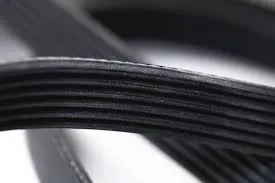- Arabic
- French
- Russian
- Spanish
- Portuguese
- Turkish
- Armenian
- English
- Albanian
- Amharic
- Azerbaijani
- Basque
- Belarusian
- Bengali
- Bosnian
- Bulgarian
- Catalan
- Cebuano
- Corsican
- Croatian
- Czech
- Danish
- Dutch
- Afrikaans
- Esperanto
- Estonian
- Finnish
- Frisian
- Galician
- Georgian
- German
- Greek
- Gujarati
- Haitian Creole
- hausa
- hawaiian
- Hebrew
- Hindi
- Miao
- Hungarian
- Icelandic
- igbo
- Indonesian
- irish
- Italian
- Japanese
- Javanese
- Kannada
- kazakh
- Khmer
- Rwandese
- Korean
- Kurdish
- Kyrgyz
- Lao
- Latin
- Latvian
- Lithuanian
- Luxembourgish
- Macedonian
- Malgashi
- Malay
- Malayalam
- Maltese
- Maori
- Marathi
- Mongolian
- Myanmar
- Nepali
- Norwegian
- Norwegian
- Occitan
- Pashto
- Persian
- Polish
- Punjabi
- Romanian
- Samoan
- Scottish Gaelic
- Serbian
- Sesotho
- Shona
- Sindhi
- Sinhala
- Slovak
- Slovenian
- Somali
- Sundanese
- Swahili
- Swedish
- Tagalog
- Tajik
- Tamil
- Tatar
- Telugu
- Thai
- Turkmen
- Ukrainian
- Urdu
- Uighur
- Uzbek
- Vietnamese
- Welsh
- Bantu
- Yiddish
- Yoruba
- Zulu
Nov . 11, 2024 02:19 Back to list
Understanding the Importance of Toothed Belts in Automotive Engines and Their Maintenance Needs
Understanding the Role of the Toothed Belt in Automobile Functionality
In the intricate world of automobile mechanics, numerous components work together harmoniously to ensure the vehicle functions efficiently. Among these components, the toothed belt stands out as a crucial element, playing a significant role in the overall performance of internal combustion engines. This article aims to delve into the specifics of toothed belts, their functions, advantages, installation procedures, and maintenance tips.
What is a Toothed Belt?
A toothed belt, also known as a timing belt, is a reinforced rubber belt with teeth or notches along its inner surface. These teeth enable the belt to grip the pulleys precisely, providing accurate synchronization of critical components within the engine. Typically, a toothed belt connects the crankshaft to the camshaft, ensuring that the valves open and close at appropriate times in relation to the position of the pistons. This synchronization is vital for maintaining the engine's performance and preventing potential damage.
Functionality of the Toothed Belt
The primary function of the toothed belt is to maintain the timing of the engine's oscillating parts. In four-stroke engines, there are intricate interactions between the crankshaft and camshaft. The crankshaft translates the linear motion of the pistons into rotational motion, while the camshaft controls the timing of the valve openings and closings. The toothed belt connects these two components, ensuring that they work in tandem.
Furthermore, toothed belts may also drive ancillary components such as the water pump, alternator, and power steering pump, depending on the vehicle's design. The belt effectively acts as a power transfer mechanism, allowing for a more compact and efficient engine design.
Advantages of Toothed Belts
1. Precision Timing One of the most significant advantages of toothed belts is the precise timing they offer. Their toothed design prevents slipping, ensuring that the connection between the crankshaft and camshaft remains consistent under various engine operating conditions.
car toothed belt

2. Quieter Operation Compared to traditional V-belts or chain systems, toothed belts operate much more quietly. This reduction in noise contributes to a more pleasant driving experience.
3. Lower Maintenance Toothed belts typically require less maintenance than their chain counterparts. They are less prone to stretching and do not require lubrication, which simplifies upkeep.
4. Lightweight Made from modern materials like neoprene and reinforced with fibers, toothed belts are lightweight yet incredibly durable, contributing to an overall reduction in vehicle weight and improved fuel efficiency.
Installation and Maintenance
Proper installation of a toothed belt is critical for ensuring its longevity and effectiveness. It is advised that a certified mechanic performs this task, as incorrect tensioning or misalignment can lead to catastrophic engine damage. Many manufacturers recommend replacing the toothed belt every 60,000 to 100,000 miles, depending on driving conditions and vehicle make.
When replacing a toothed belt, it is advisable to also replace related components such as the water pump, idler pulleys, and tensioners to prevent future complications. Regular visual inspections can help identify early signs of wear, such as cracks, fraying, or missing teeth, allowing for timely replacements.
Conclusion
In summary, the toothed belt is a vital component of modern automotive design, playing an essential role in engine synchronization and overall vehicle performance. Its precision, low maintenance requirements, and noise reduction capabilities make it a preferred choice over traditional timing systems in many vehicles. For car owners, understanding the importance of the toothed belt can lead to better maintenance practices and enhanced vehicle longevity. Regular checks and timely replacements are not just recommendations but necessities for ensuring a well-functioning automobile. Understanding and respecting the contribution of the toothed belt can lead to a more enjoyable and reliable driving experience.
-
Upgrade Power Steering Pump Belt for Smooth, Quiet Operation
NewsAug.27,2025
-
Precision Timing Belt & Chain: Engine Performance & Durability
NewsAug.26,2025
-
Precision Lathe Drive Belts: Durable & Reliable Performance
NewsAug.25,2025
-
84.5 Serpentine Belt: Durable & Precision Fit for Your Engine
NewsAug.24,2025
-
Premium Ribbed Drive Belts for Quiet Power Transmission
NewsAug.23,2025
-
High-Performance Vehicle Timing Belt for Engine Precision
NewsAug.22,2025

